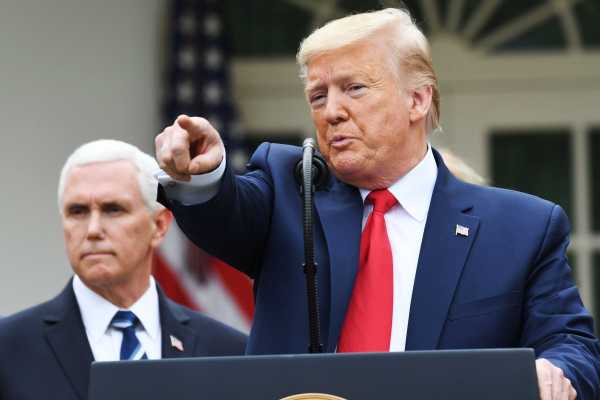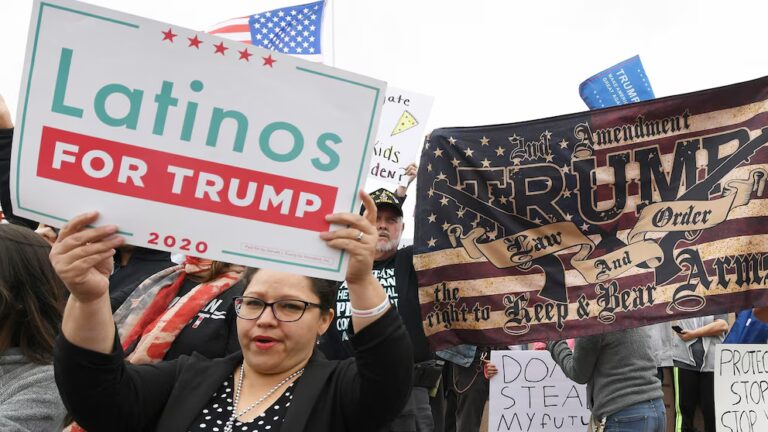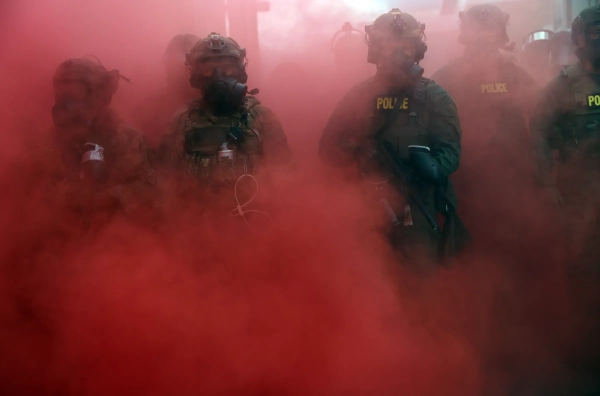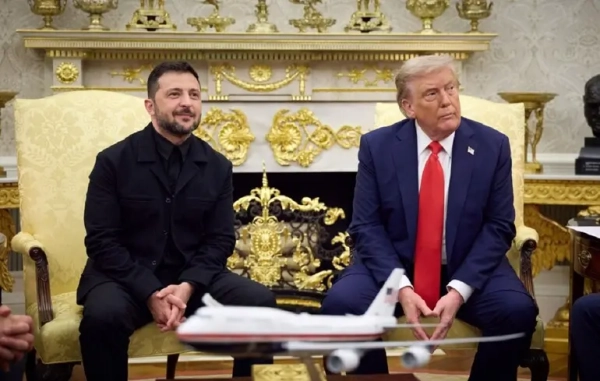
President Donald Trump on Friday took to the podium during a Rose Garden press conference to allay concerns about the growing coronavirus outbreak in the US.
But even while announcing new measures against Covid-19, the disease caused by the virus, Trump continually downplayed the threat the country is facing and refused to take responsibility for the testing shortage that has left the US unable to track the unrolling pandemic.
Asked about whether he takes any blame for the botched testing process, Trump said, “I don’t take responsibility at all.”
The big announcement came when Trump announced a national emergency, unlocking billions of dollars in disaster aid to help combat the virus. The administration previously declared a public health emergency in January, but that didn’t tap into as much money as the new declaration under the 1988 Stafford Act, which is typically used for natural disasters like hurricanes and tornadoes, will allow.
Trump, flanked by the leaders of Target, Walmart, and Walgreens, announced several other measures, including a public-private partnership to boost testing capacity by setting up drive-through testing sites at some pharmacies and major store chains. That includes up to 5 million more tests and a website, developed with the help of Google, to help connect people to nearby testing stations.
He also announced efforts to relax laws and regulations that can limit health care capacity, including the greater use of telehealth and the elimination of some restrictions on hospital stays. He suggested that these changes will help build up capacity — a critical element to mitigating the outbreak — but it’s not clear if these will succeed.
At the same time, Trump acknowledged that there’s still no agreement with Democrats in the House about a package to deal with the crisis.
Some of this is in line with what experts have called on to deal with the crisis, but given the administration’s history in dealing with the pandemic, it’s unclear if these measures will work as planned. And the lack of a broader deal between Trump and House Democrats means more comprehensive action isn’t quite here yet.
Trump continually downplayed the pandemic, even while trying to address it
In between these announcements, Trump seemingly couldn’t help but downplay the risk of the crisis, while repeatedly shaking hands with other people present at the press conference.
Immediately after announcing the federal government will get 5 million test kits out, he said, “I doubt we’ll need anywhere near that.”
Trump also cautioned against too much testing capacity: “We don’t want people to take a test if we feel that they shouldn’t be doing it. And we don’t everyone running out, only if you have certain symptoms.” But while it’s true that not everyone needs to be tested, it’s these kinds of roadblocks that have led to report after report of doctors and patients struggling to get access to tests. On social media, doctors regularly complain that they can’t obtain tests for patients even if the patients display symptoms.
Testing is crucial to slowing epidemics. First, it lets public health officials identify sick people and subsequently isolate them. Second, they can trace that sick person’s recent contacts to make sure those people aren’t sick and to get them to quarantine as well. It’s one of the best policy tools we have for an outbreak like this.
Trump, however, suggested that all this testing is not going to be necessary, because the pandemic will reside.
“Again, we don’t want everybody to take this test, it’s totally unnecessary and this will pass,” he said. “This will pass through, and we’ll be even stronger for it.”
This viewpoint isn’t new to Trump. He previously tweeted comparisons to the common flu, which in fact appears to be less deadly and spread less easily than the coronavirus. He called concerns about the virus a “hoax.” He said on national television that, based on nothing more than a self-admitted “hunch,” the death rate of the disease is much lower than public health officials projected. And in February, he said of the coronavirus, “One day it’s like a miracle, it will disappear.” (As of March 13, the country has more than 1,200 confirmed cases, according to Johns Hopkins’s interactive map.)
Experts have been critical of the messaging. Ashish Jha, director of the Harvard Global Health Institute, called it “deeply disturbing,” adding that it’s “left the country far less prepared than it needs to be for what is a very substantial challenge ahead.”
But even as he declares the outbreak a national emergency, Trump continues to deny and downplay the growing dangers of a major public health crisis.
Sourse: vox.com






